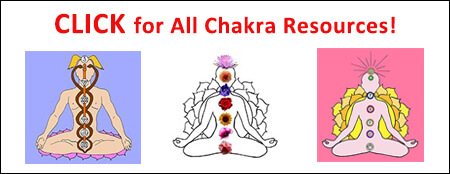
Sacred Breath
Related Music: Breathe Through Me
Breath is more than a biological necessity; across cultures and spiritual traditions, it is seen as a bridge between the physical and the divine. From the Holy Spirit in Christianity to the yogic practice of pranayama in Hinduism, breath serves as a powerful symbol and tool for spiritual transformation.
Breath is both the rhythm of life and a pathway to transcendence, woven into meditation, prayer, and ritual across the globe. It is the ever-present reminder of life’s fragility and the potential for inner peace and divine connection. In spiritual practice, to breathe is not just to live—it is to awaken.
Share this page with a friend!
Watch nearly 400 videos on the Vocal Medicine Channel!
Breathe Through Me
Holy breath, sacred fire & living water: music for universal spirituality. God is associated with the breath, fire and the wind in many spiritual traditions. The Holy Spirit in Christianity is an undifferentiated power of God and the focus of many devotional songs in the Western or Christian tradition.
The Western Holy Spirit is akin to Shiva, third person of the Hindu Trinity. The idea that God breathes life into animate form is also a common theme in many traditions. The Holy Spirit is also known as the Holy Ghost. There are seven gifts of the Holy Spirit: wisdom, understanding, counsel, fortitude, knowledge, piety, and fear of the Lord.
This video includes these ideas in a simple and beautiful melody. Lyrics and vocals by Kathleen Karlsen. Arrangement and production by Jake Fleming. Plus Jake’s sweet sax throughout.
Sacred Breath as the Holy Spirit
In Christian theology, the breath is intimately tied to the Holy Spirit. The very word “spirit” comes from the Latin spiritus, meaning “breath” or “wind.” In the Bible, God breathes life into Adam (Genesis 2:7), symbolizing the divine origin of life.
The Holy Spirit is often described as a breath or wind that brings renewal, guidance, and comfort. At Pentecost, the Spirit descends upon the apostles like a rushing wind, igniting their ability to speak in tongues and spread the gospel. This imagery emphasizes the breath as a vehicle of divine power.
Pranayama and the Yogic Tradition
In Hinduism and yogic philosophy, the concept of prana—life force or vital energy—is central. Pranayama, which means “control of prana,” involves a series of breathing techniques used to regulate and direct this life energy. More than a physical exercise, pranayama is a spiritual discipline aimed at purifying the body and mind, preparing the practitioner for deeper meditation and union with the divine.
Techniques like nadi shodhana (alternate nostril breathing), kapalabhati (skull-shining breath), and bhramari (humming bee breath) are not just health practices—they are methods of cultivating inner stillness and clarity.
Breath becomes a tool to control the mind, regulate emotion, and open pathways to higher consciousness. In yogic texts like the Hatha Yoga Pradipika and the Bhagavad Gita, the mastery of breath is seen as essential for spiritual liberation (moksha).
Sacred Breath in Buddhism and Meditation
In Buddhism, particularly in Theravāda and Zen traditions, breath is a central focus of meditation. Anapanasati, or “mindfulness of breathing,” is one of the oldest and most practiced forms of meditation.
By focusing attention on the inhale and exhale, practitioners cultivate awareness, presence, and insight. The breath anchors the mind in the present moment and reveals the impermanence of all things—a key insight in Buddhist thought.
Breath meditation is not about control but observation. As the breath flows naturally, the meditator becomes more attuned to the body and the subtle movements of the mind. This awareness leads to equanimity, compassion, and ultimately awakening.
Sacred Breath in Shamanic Traditions
Indigenous cultures also recognize the spiritual power of breath. In many Native American rituals, breath is honored as part of the sacred relationship between humans and nature. The breath of the Earth—felt as wind—is considered a spirit in its own right.
In some shamanic practices, breathing techniques are used to enter trance states, connect with ancestors, or journey into non-ordinary realities. Breath is also integral to African and Amazonian spiritual ceremonies, where it is often combined with chanting, drumming, or plant medicines to facilitate healing and transformation.
In these contexts, breath is not only a life force but a sacred current that links individuals to the collective and the cosmos. Across time and culture, breath has been more than mere respiration—it is a spiritual instrument.
Author Kathleen Karlsen
Kathleen Karlsen is a musician, artist, writer and speaker. She is the author of two books (Flower Symbols and Vocal Medicine) and over 200 articles. Kathleen, her husband Andrew, and their five children live in Bozeman, Montana. More about Kathleen Karlsen.
Sacred Breath Article Summary
Across time and culture, sacred breath has been more than mere respiration—it is a spiritual instrument. Whether it is the Holy Spirit breathing new life, the controlled rhythms of pranayama, or the mindful awareness in Buddhist practice, breath connects the seen and unseen, the body and the soul. Learn more in this article about the role of sacred breath in spiritual awakening.
Click for all content on our Site Map
Listen on Spotify!
Click to hear
108x Around the Heart
Click to hear
Vocal Medicine Kirtan







